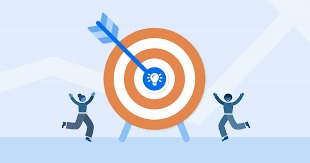In a fast-paced digital landscape, the difference between a forgettable experience and one that keeps users coming back often lies in the details. Whether you’re creating a new digital tool or optimizing a customer-facing platform, anticipating what users truly want is key. But how can businesses consistently design tools and experiences that hit the mark? The answer lies in a blend of strategic foresight, user-driven design, and digital innovation.
Understanding What Users Want Before You Build
When planning to enhance or develop digital tools, it’s tempting to jump straight into design and features. But skipping the discovery phase can lead to bloated systems filled with underused elements. Instead, businesses should focus on gathering insight from their audience before committing to a build. By taking time to understand what matters most to users, teams can better prioritize functionality, usability, and impact.
Prioritizing Features Based on Real User Input
Identifying what your users actually need starts with the right tools. A software needs assessment template serves as a strategic foundation during the early stages of product development. It helps product teams cut through the noise and uncover which features will deliver the most value. With the right approach, businesses can use this data to align development priorities with real user expectations—saving time, reducing revisions, and boosting satisfaction in the long run.
Rather than making assumptions or relying solely on competitor analysis, an intuitive assessment tool invites users into the process. This approach not only sharpens focus during development but also strengthens trust with your audience by showing that their input matters.
Testing and Validating the User Flow
Once priorities are defined, the next step is validating how users move through your platform. Navigation, responsiveness, and clarity all contribute to the overall user experience. Testing different layouts and user flows before final development ensures smoother interactions and reduces friction.
This stage is also the perfect opportunity to eliminate unnecessary complexity. Tools and interfaces that are overly complicated can deter users, especially when speed and clarity are critical. Focus on keeping things intuitive—your users will thank you.
READ MORE : Hobbies That You Can Do From Your Computer
Bringing It All Together With Seamless Execution
After the planning and testing phases, execution becomes the final—and most visible—step. Here, customer-centric online ordering systems really shine. A smooth, efficient ordering process can make or break a digital experience, especially in industries like hospitality or retail. By combining early-stage insights with streamlined design, businesses can create systems that not only work but also delight users at every click.
Seamless execution means fewer frustrations, higher conversions, and stronger brand loyalty. And when your digital product aligns with the expectations gathered in the discovery phase, the results are usually worth the extra effort.
Wrapping Up: From Insight to Impact
Smart planning isn’t just a back-end activity—it’s a vital part of crafting user experiences that feel effortless. By investing in early assessments, validating designs, and prioritizing smooth execution, businesses can reduce waste and build digital tools that truly resonate. Whether you’re launching something new or refining an existing platform, it all starts with understanding your users—then building something remarkable just for them.




